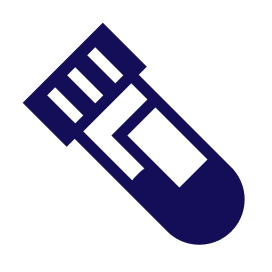Preparing
my visit
On an empty stomach or not?
The state of fasting is one of the factors that enable the analyses to be carried out correctly and the results to be interpreted appropriately.
Some analyses require a strict fasting state (no food or drink for 8 or 12 hours, with the exception of still water).
It is recommended that you eat a light meal the evening before.
Documents to bring with you on the day of your testing
On the day of your testing, don’t forget the following documents:
Your prescription and proof of identity
As the prescription is the starting point for any analysis, it is essential that the prescription and the patient’s identity are legible.
It is valid for one year from the date it is written by the prescriber.
The prescription must include
- Patient identification.
- The surname and first name of the prescribing doctor.
- The prescriber’s identification number.
- The prescriber’s address and telephone and/or fax number.
- It must be dated and signed.

Your Carte Vitale
No longer pay in advance for your analyses by showing your up-to-date Carte Vitale. When going to the pharmacy, don’t hesitate to check and update your Carte Vitale.

Your insurance card
And don’t forget your current year’s health insurance card. If you are covered by CMU, AME or 100% Sterility: your current certificate will be asked.
Our laboratory has third-party payment arrangements with many insurance companies and the Health Insurance Scheme (CMU, AME), which means that you do not have to pay in advance in almost all cases.

Collecting samples at home
Some samples, such as urine or stool samples, can be collected by you at home.
In this case, the laboratory will provide you with bottles to collect the samples and will give you all the explanations you need to carry out the procedure.

Specific tests
Some tests require prior agreement, consent or a consultation certificate. A specific form must be completed, signed by the prescriber and the patient, and attached to the prescription (e.g. Assessment of the risk factor for foetal trisomy 21 using serum markers in maternal blood and HLAB27).
Some analyses require several consecutive samples to be taken and therefore a long stay in the laboratory. (e.g. orally induced hyperglycaemia (OIGH)).
Please do not hesitate to contact the laboratory, which will explain the procedure and provide you with necessary documents.

Contact us
*Required fields

